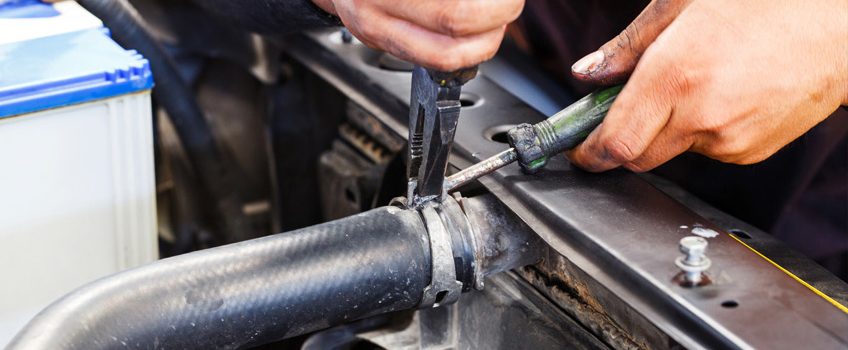How to Replace a Radiator Hose
Difficulty: Easy
Duration: 10 minutes
How often: Every 60,000 miles
All modern automotive engines are liquid-cooled, and the cooling system is essential to keep these engines from overheating. Radiator hoses carry coolant, or antifreeze, between the engine and radiator. Over time, a radiator hose is exposed to high heat and, in some climates, freezing temperatures, too. To prevent a failure, replace your radiator hose to keep the cooling system operating correctly and to prevent your engine from overheating.
If your car is over four years old or has more than 60,000 miles, it may be time to replace your hose. If you do a lot of stop-and-go driving wear can occur even quicker. If a leak develops, you run the risk of overheating your engine and should replace the hose immediately.
Before you begin to replace your radiator hose, you need to make sure you can reach it easily. If so, use this guide to learn how to replace a radiator hose. If the hose is in a difficult location or you prefer to have a professional replace the hose, your local NAPA AutoCare Center can do the job for you.
Things you’ll need from your garage or your local NAPA AUTO PARTS Store:
- New radiator hose
- Original equipment recommended coolant
- Distilled water
- Screwdriver
- Utility knife
- Large pan or bucket
Step 1
Make sure your car has cooled down before touching or opening the radiator.
Step 2
Place a large pan under the radiator and drain it by unscrewing the drain plug. This is located at the bottom of the radiator.
Step 3
Use a flat head screwdriver to remove the hose clamps on both ends of the hose. You may have to use a utility knife to remove the hose completely. If so, remember to cut carefully so you don’t damage the radiator.
Step 4
Put the hose clamps on to the new radiator hose and put it in proper position. Tighten the hose clamps.
Step 5
Use a mixture of half parts coolant and half parts water to refill the radiator. Always use the coolant recommended by the car manufacture. Use either pure coolant mixed with distilled water or use premixed coolant.
Step 6
Leaving the radiator cap open, start your car and turn the heat to the maximum setting. Press the gas pedal to approximately 1/4 throttle, holding for about 10 seconds at least two to three times. Do not press the gas pedal to the floor.
Step 7
Secure the radiator cap.
IMPORTANT TIPS:
- Radiator hose replacement is recommended every four years or 60,000 miles. Stop and go traffic may require more frequent replacement of your hose.
- If you are going to replace your hose yourself, be sure to get the exact hose for your year, make and model. Hoses are not interchangeable; each requires a specific size and shape.
- If your vehicle requires a new water pump, this is a sign that it has overheated before and hose replacement is suggested.
- If your vehicle requires a new radiator cap, check your radiator hose carefully. A faulty cap can put additional pressure and wear on the radiator hose.


